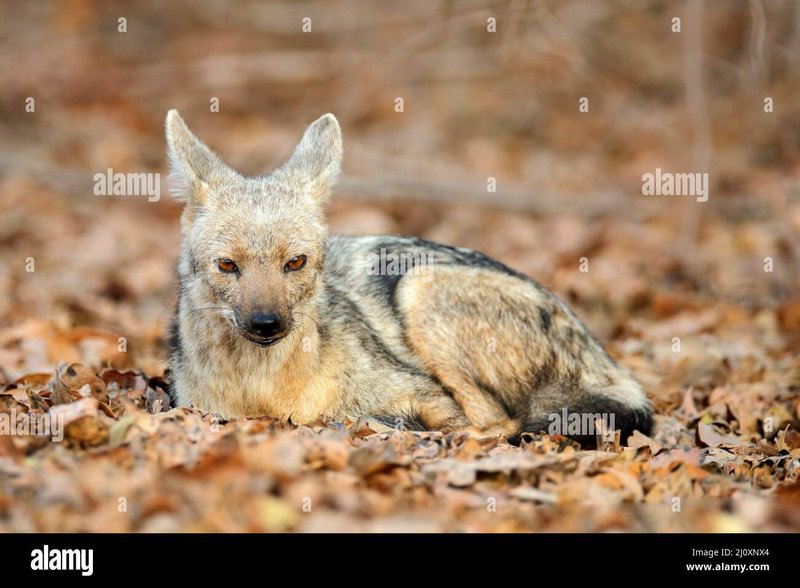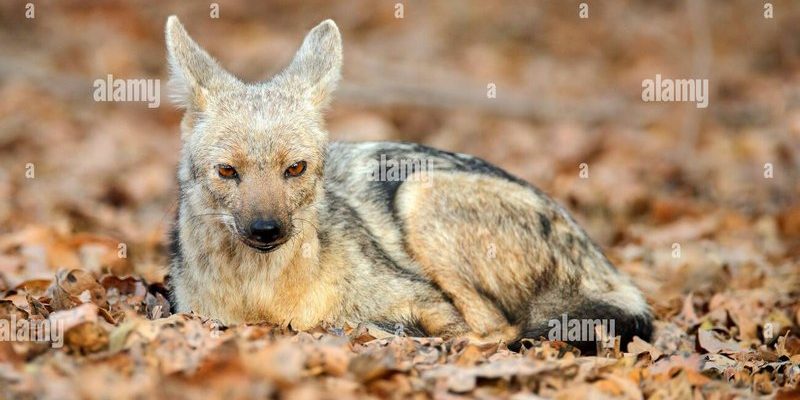
Imagine walking through a savanna landscape where these clever creatures roam. Their distinct features and behaviors make them stand out in the wild. The side-striped jackal’s diet and hunting strategies reveal not just how they find food, but also how they adapt to their environments. Let’s dive into the world of the side-striped jackal to uncover what makes them tick.
Understanding the Side-Striped Jackal
The side-striped jackal (Canis adustus) is a medium-sized canid native to sub-Saharan Africa. They are distinguished by their trademark striped sides, which provide excellent camouflage in their natural habitats. You might spot these animals in wooded areas or savannas, where they feel most at home.
What’s intriguing about them is their *social structure*. Unlike some canids that form strong packs, side-striped jackals are more solitary or found in small family units. This behavior influences their hunting strategies and dietary choices. Given their smaller size compared to some other jackals, they’ve had to adapt and innovate to survive.
The Diet of the Side-Striped Jackal
So, what do these jackals eat? Their diet is surprisingly varied! Side-striped jackals are omnivorous, which means they enjoy a mix of meat and plant-based foods. You might be wondering how they balance this diverse diet.
- Small Mammals: They often hunt for small rodents, birds, and even insects. Think of them as nature’s little pest controllers!
- Fruits and Vegetables: When animal protein is scarce, they’re not above snacking on fruits, berries, or tubers. This flexibility helps them adapt to seasonal changes.
- Scavenging: Just like other jackals, they don’t shy away from scavenging. They can often be seen feeding on the remains of larger animals, taking advantage of what others leave behind.
Their ability to switch between hunting and scavenging allows them to thrive in various environments. It’s like having the best of both worlds—sometimes they’re hunters, and other times, they’re opportunistic diners!
The Hunting Techniques of the Side-Striped Jackal
Now, let’s talk about how the side-striped jackal actually goes about catching its food. These animals have developed some clever hunting strategies that showcase their intelligence and adaptability.
For instance, they typically hunt alone or in pairs. You might see them working together to corner a small mammal or chase down a bird. They’re not just running blindly; they use their keen senses to spot movement and listen for the sounds of their prey. Imagine being a side-striped jackal—patience is key. They often wait quietly, ready to spring into action at a moment’s notice.
Another interesting strategy is their *pouncing ability*. When they spot a potential meal, they can leap into the air and land on their prey, similar to how a cat might. This surprise tactic can be incredibly effective when hunting small rodents hiding in grass or underbrush.
Social Behavior and Its Impact on Hunting
Social dynamics play a crucial role in how side-striped jackals hunt. In contrast to their relatives, they might not form large packs, but they do have family units. This family structure can enhance their hunting success.
For example, when hunting larger prey or navigating complex terrain, you might see a parent and their young working in tandem. The adult may take the lead, while the younger ones learn the ropes. This shared experience helps pass down valuable hunting skills, ensuring that the next generation is well-prepared.
Conversely, their solitary nature allows them to be stealthy and focused. They don’t have to compete with many others for food. It’s like a well-crafted solo act in a talent show—sharp, focused, and effective!
Seasonal Variations in Diet
Just like many animals, the side-striped jackal’s diet shifts and changes with the seasons. This adaptability is key to their survival. During the rainy season, when plants bloom and small mammals proliferate, you might find these jackals feasting on a rich variety of foods.
However, as seasons change and resources dwindle, they adapt their diet accordingly. During dry spells, they often rely more on scavenged food or switch to eating more fruits and tubers. This ability to pivot in their food choices is a profound advantage in the wild.
It’s fascinating to think about how these creatures adjust their hunting strategies based on the environment around them. They remind us of the importance of flexibility and resilience when dealing with life’s challenges.
Threats and Conservation
Despite their adaptability, the side-striped jackal faces various threats. Habitat loss and human-wildlife conflict are significant issues that put pressure on their populations. As more land is developed for agriculture or urbanization, the areas where these jackals thrive can diminish.
Further, they can sometimes be regarded as pests by farmers, leading to attempts to control their populations. Conservation efforts are vital to ensure the side-striped jackal continues to play its role in the ecosystem.
By promoting coexistence strategies and protecting their habitats, we can help ensure that these unique creatures remain a part of our natural heritage. It’s a shared responsibility to appreciate and safeguard the diversity of life around us.
The side-striped jackal is a remarkable animal with a diverse diet and clever hunting strategies. They embody resilience and adaptability, teaching us valuable lessons about survival and the importance of maintaining ecological balance. Whether they’re scrounging for scraps or pouncing on a small mammal, these jackals remind us that every creature plays a vital role in the ecosystem.
As we continue to learn about their habits and behaviors, let’s also advocate for their protection and appreciate the beauty of nature that surrounds us. So next time you think of jackals, remember the side-striped jackal—a little underdog with a big story to tell!

